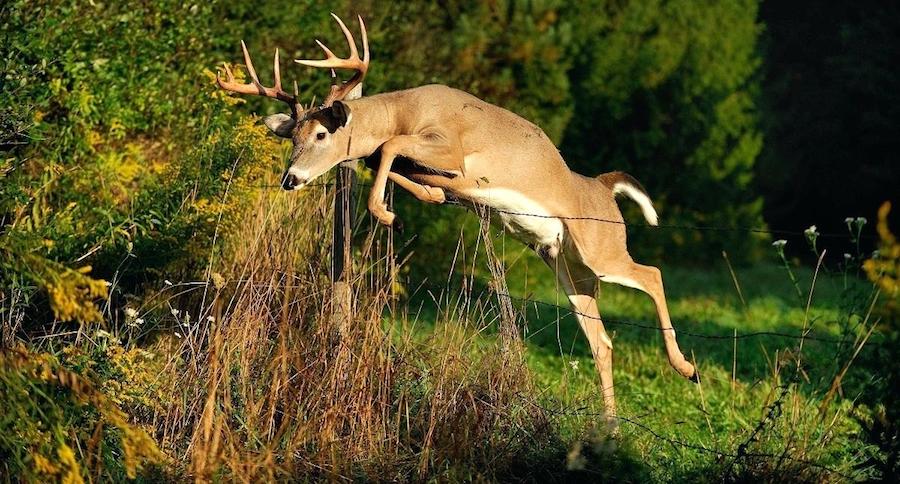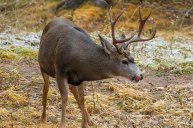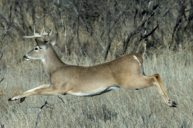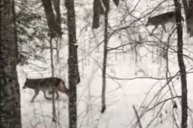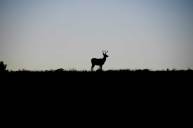Sometimes you have to think outside the woods.
When it comes to deer hunting, many hunters have their favorite stands that they've hunted out of for years. Normally, you'll find these treestand locations near bedding areas, food sources, food plots and regular travel corridors. However, these stand sites almost produce the same results. The mature buck in your woods knows where you like to hunt. In case he forgot, he'll remember pretty quickly once the season begins. This year, throw him off by trying a few nontradtional treestand locations to really trick that big buck.
As years of research have shown, deer movement dramatically changes once hunters enter the woods. If your woods have a ton of hunting pressure, this impact is even more pronounced. The early season may be the best time to take down a deer because by the time the rut rolls around, all your deer have earned their doctorate degrees in hunter management. However, some of the best deer hunters have already punched their tags before the weather even starts to get cold.
When the time comes to find your treestand locations this year, try to put yourself in the mind of the deer. Where would you go if humans were in your woods? It's there you'll find your perfect tree.
Fence Lines
If you have fence lines on your property, walk them. If you're lucky, you'll have fence lines between nearby woods where other hunters might hunt. These field edges can be great hunting spots simply because deer use those fence lines as natural funnels to and from places. It's sort of like us taking the sidewalk to the store. Instead, they may cross the fence. And, they generally have a spot they like to cross, too.
If you walk the fence, you'll see how they're moving from one location to another. One thing to consider here, though, is that you may have to find a tree for a hang-on stand. A ground blind may also be in order.
Some of the best fence lines I've ever hunted have been those with very little trees. However, one in particular connected a nearby woods where hunters would blow deer out every time they walked in their woods. Like clockwork, they would slowly trot right out of those woods, enter the open field, then meander to my fence line. At that point, they'd cross at a downed part of the fence and continue onto another property. We affectionally call this hunting spot "the killing field." Though the name is harsh, if a deer walks out into that field, and it's a deer we want to take, we already know the likely outcome.
The Small Woods
Depending on where you hunt, you may have a small patch of woods you've walked by 1,000 times on your way to your treestand. I'd bet dollars to donuts that if you had trail cameras in that small patch of woods, it would blow your mind. Treestand placement in this patch of woods might be tough because they're normally so small, but you can pattern deer to them like clockwork. Normally, the big mature buck in your area uses it like a bedroom. You'll never see it go in there. It's probably in there when you walk by, too. It's that buck's safe space when things get crowded by hunters. Wind direction is always a factor when hunting these woods, but a buck will cruise these, too, making scrapes and rubs.
Another benefit to the small woods is other hunters often overlook them. There's a good chance you'll have it all to yourself. Does may use it for a staging area before they enter a field. A big buck may use it to hold in to scout an area before making a move. If you play your cards right, though, and only use it when the wind direction is in your favor, you could be in very good shape.
Scout, Scout, Scout
If you really want to see the movement patterns of the deer in your area, there's really only one way to do it. You have to be out there to see it for yourself. Yes, trail cameras are great, but they only show a small part of the picture. Get yourself a great pair of binoculars, a full tank of gas, and drive your hunting area in the evenings and early mornings. You'll see where the deer are coming from and where they're going. This how you find a truly great early-season stand location.
Your best chance at tagging out on the deer you want is to catch it off guard. Just try to be unpredictable. Deer pattern us the same way we pattern them. By picking treestand locations off the beaten path, you can catch them sneaking out the back door.
NEXT: REMEMBER THE MUMMIFIED HUNTING DOG FOUND INSIDE A HOLLOW TREE?
WATCH
